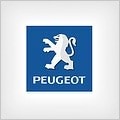
PEUGEOT 806
Generations Timeline, Specs and Pictures

Peugeot 806 was one of the products that resulted from the Eurovan agreement between PSA (Peugeot-Citroen) and Fiat (Fiat-Lancia) launched in 1994 and refreshed in 1998.
Even though the minivan didn’t show its age, the carmakers had to improve their vehicles. When the two big European carmakers developed the range, they had to comply with the Euro 2 emission standards. Still, starting with January 2001, all passenger vehicles had to comply with newer, stricter requirements.
Peugeot used its number system to define its cars and assigned the 8 for that minivan. The refreshed version featured different headlights, with a sharp angular inner side. Also, the grille received a slimmer middle slat that supported the brand’s logo surrounded by a chromed trim. At the back, the carmaker moved the brand name centered on the liftgate with oversized letters and wrote the model name on the lower side of the rear window.
Inside, the 806 was a champion in its class in terms of versatility. Peugeot moved the gearshift lever from the floor to the dashboard and the handbrake on the driver’s left side (right-side for the right-hand-drive vehicles). As a consequence, there was a passage between the front seats toward the back of the car. The middle and the rear seats could have been moved or completely removed and used as picnic seats and placed on the ground.
For the engines, the 806 was available with the PSA engines exclusively. Peugeot offered a four-speed automatic gearbox for the 2.0-liter 16 gasoline engine, while for the rest of the range, it installed five-speed manuals.

Peugeot-Citroen and Fiat joined forces to produce a minivan to compete against the Renault Espace and Volkswagen Transporter Van.
Due to the narrow streets and twisty roads, European customers were not very keen on minivans. They chose station wagons instead, and that led to a small demand for MPVs. On the other hand, Renault made the Espace in 1984 and conquered the segment competing against Chrysler Voyager, Mitsubishi L300, and Toyota Previa. Then, in 1994, the Eurovans appeared on the market. It was a successful badge-engineering project, which resulted in four vehicles: Citroen Evasion, Peugeot 806, Fiat Ulysse, and Lancia Zeta.
The 806 featured a pair of headlights similar to those installed in its large executive sedan 604. Its single-slat grille sported the company’s chromed badge in the middle. On the lower side, a plastic wrapped-around bumper featured fog lights and an additional, slim grille. Unlike the Espace, the Eurovans had sliding rear doors, making the ingress and egress easier for the second and third-row passengers. At the back, a wide and tall liftgate opened the way to the trunk.
Inside, the carmaker installed seven individual seats. Apart from the front ones, all the others could have been removed. That led to a cavernous storage area of up to 3,300 liters (116.5 cu-ft) from the small 340 liters (12 cu-ft) with all seats in place. The dashboard was broad and featured a curved instrument cluster in front of the driver, with two large dials. Due to the elevated seating position, the carmaker installed the gear-stick on the center stack.
Under the hood, all Eurovans got Peugeot-Citroen engines, both gasoline and turbo-diesel diesel. The carmaker paired them with a five-speed manual with an option for a four-speed automatic for the 2.0-liter 16v engine.























































